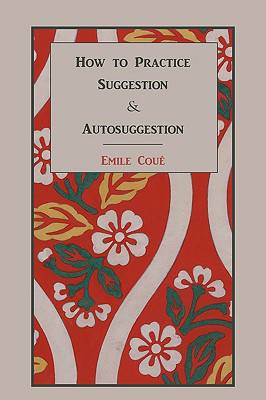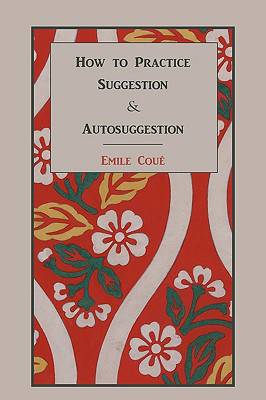
- Afhalen na 1 uur in een winkel met voorraad
- Gratis thuislevering in België vanaf € 30
- Ruim aanbod met 7 miljoen producten
- Afhalen na 1 uur in een winkel met voorraad
- Gratis thuislevering in België vanaf € 30
- Ruim aanbod met 7 miljoen producten
Zoeken
€ 22,95
+ 45 punten
Omschrijving
2010 Reprint of 1923 First Edition. Illustrated. Although commonly known to the layman as a technique that can affect the physical world, bring wealth, and even add to one's IQ, autosuggestion is actually a technique intended to complement the use of medicine. It was developed by apothecary Emile Coué from the late 1800's to the early 1900's. In 1932, German psychiatrist Johannes Schultz developed and published autogenic training, a relaxation technique influenced by the Coué method. The Coué method centers on a routine repetition of a particular expression according to a specified ritual in a given physical state at the beginning and at the end of each day. Against the belief that a strong conscious will constitutes the best path to success, Coué maintained that curing some of our troubles requires a change in our subconscious/unconscious thought, which can only be achieved by using our imagination. Although stressing that he was not primarily a healer but one who taught others to heal themselves, Coué claimed to have effected organic changes through autosuggestion.
Specificaties
Betrokkenen
- Auteur(s):
- Uitgeverij:
Inhoud
- Aantal bladzijden:
- 134
- Taal:
- Engels
Eigenschappen
- Productcode (EAN):
- 9781578988976
- Verschijningsdatum:
- 1/05/2010
- Uitvoering:
- Paperback
- Formaat:
- Trade paperback (VS)
- Afmetingen:
- 152 mm x 229 mm
- Gewicht:
- 204 g

Alleen bij Standaard Boekhandel
+ 45 punten op je klantenkaart van Standaard Boekhandel
Beoordelingen
We publiceren alleen reviews die voldoen aan de voorwaarden voor reviews. Bekijk onze voorwaarden voor reviews.








